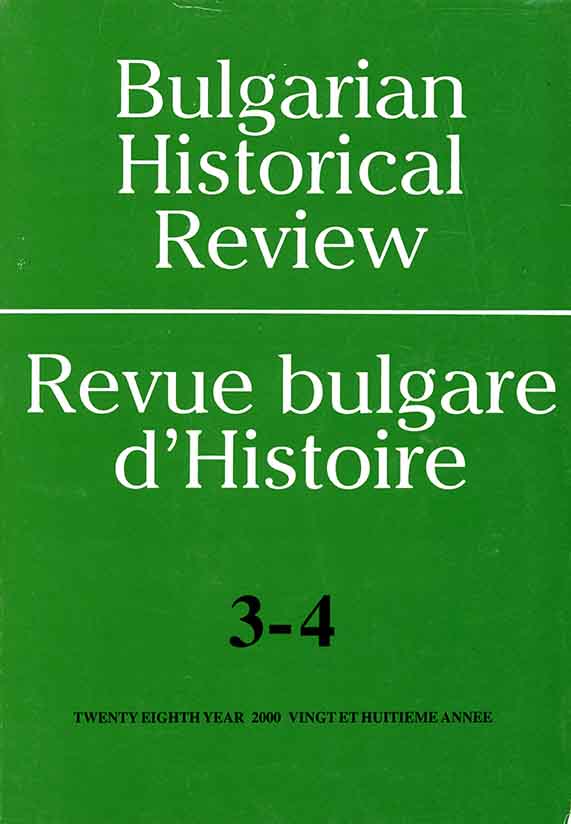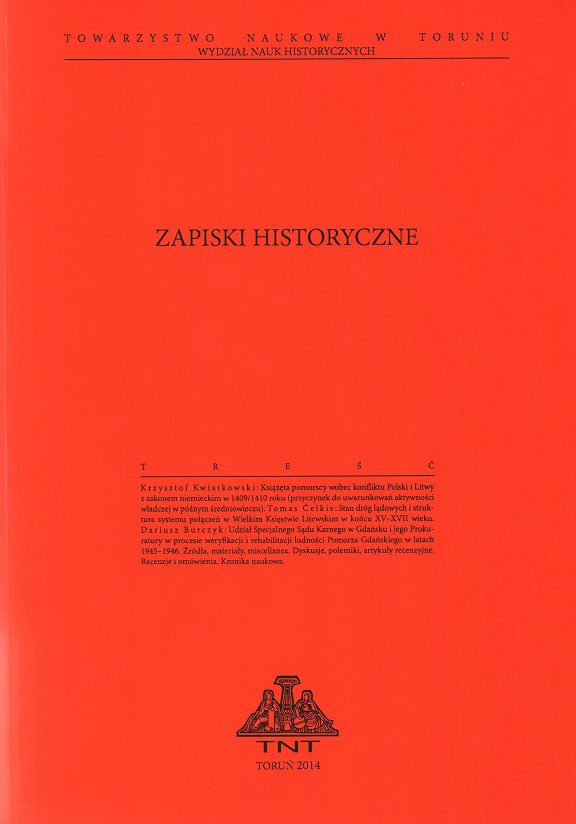
We kindly inform you that, as long as the subject affiliation of our 300.000+ articles is in progress, you might get unsufficient or no results on your third level or second level search. In this case, please broaden your search criteria.

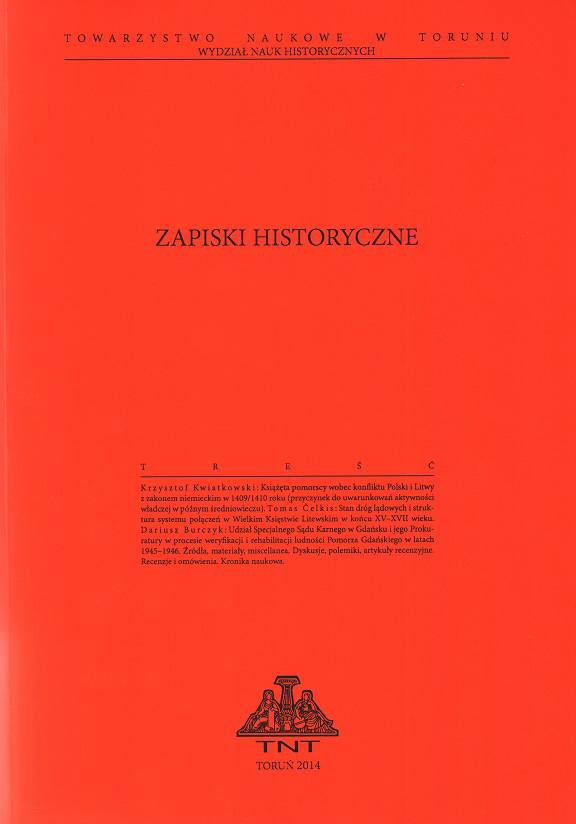
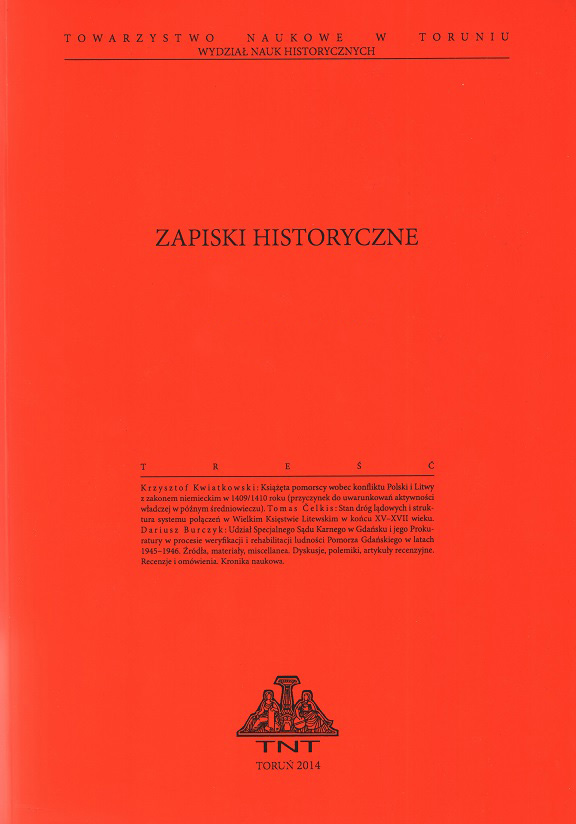
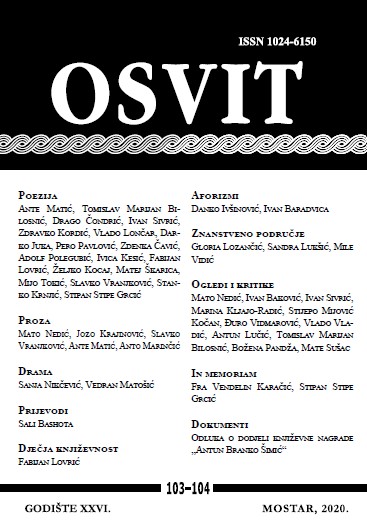
La storia del popolo Croato di Erzegovina è stata caratterizzata dalla croce e il martirio. Le gravi persecuzioni, sofferenze e il martirio del popolo croato sono avvenute durante le centinaia anni di occupazioni, tra le quali quella ottomana e quella comunista. Quando guardiamo la storia sanguinaria che ha caratterizzato il popolo croato di quest’area geografica, giungiamo purtroppo alla conclusione che la croce e il martirio sono state la caratteristica principale della storia del popolo Croato. Non è possibile presentare dettagliatamente in poche parole tutte le sofferenze che ha attraversato il popolo croato nel corso della storia. Per questo ci limitiamo alla storia moderna, cioè alla Seconda guerra mondiale e il periodo del Dopoguerra, specialmente nella zona di Erzegovina. Nell’articolo si parla del martirio come la forma ideale della disponibilità a testimoniare la propria fede ed essere pronti per la croce. Parlando del martirio è da valutare la posizione della Chiesa Cattolica sotto il governo di Tito: essa è stata l’unica istituzione che poteva resistere al regime criminale ed ateo del persecutore. Lo stesso regime ha voluto istituire la cosiddetta “Chiesa nazionale”, che sarebbe stata sotto il diretto controllo e la gestione del governo comunista, separata dalla Santa Sede. Tale idea è stata fortemente rifiutata dai vescovi della Conferenza Episcopale della ex Jugoslavia, e con i molti sacrifici essi hanno conservato il legame e l’unità con la Santa Sede. Così nel solo territorio dell’Erzegovina ha sofferto più del 10% della popolazione Croata cattolica. Proprio per questo un così grande numero di fedeli dell’Erzegovina ha subito abusi, è stata espulsa ed è morta, mostrando la sua disponibilità ad accettare la croce per la fede, anche a prezzo della propria vita.
More...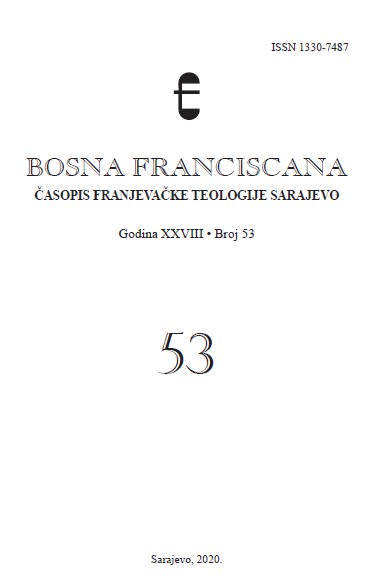
Srpski autori, uglavnom iz pravoslavnih crkvenih redova, kada pišu i govore o crkvi sv. Ilije u Krupi na Vrbasu, predstavljaju je, a i manastir uz nju, kao pravoslavne. Crkva i manastir sada to i jesu, svakako od g. 1888./1889., kada je mitropolit Sava Kosanović na tom lokalitetu poduzeo arheološke radove i obnovio, odnosno nanovo podigao porušenu crkvu sv. Ilije. Nije poznato da se prije Kosanovića itko od pravoslavnih autora bavio crkvom sv. Ilije i manastirom u Krupi na Vrbasu, a poslije njega piše se i govori o crkvi sv. Ilije i manastiru u Krupi na Vrbasu kao pravoslavnim. Da su današnji manastir i crkva sv. Ilije u Krupi na Vrbasu pravoslavni, to je neosporno. Ali se postavlja pitanje: Što je bilo ranije, od 13. st. pa na ovamo, o čemu srpski autori ne govore. Ovdje se želim time pozabaviti i, koliko je moguće, temeljem pisanih izvora i arheoloških istraživanja, barem malo to pitanje rasvijetliti.
More...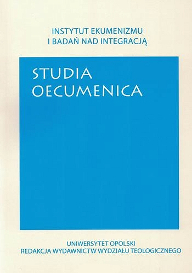
The aim of the text is to assess the ecumenical potential of various contemporary approaches to ecotheology, which try to take into account the achievements of natural and social sciences. It outlines the effects of the ecumenical interest of the Churches in ecology, understood as a certain style of thinking and acting, taking into account the good of the natural environment. The results of ecological interest in the Churches are discussed by numerous authors. For example, two complementary concepts from Western and Eastern Christianity are presented: Thomas Berry’s Interdisciplinary Ecotheology and John Zizioulas’ Ethically Oriented Ecotheology.
More...
Spór o „nadzieję zbawienia dla wszystkich” był (jest?) jedną z najciekawszych debat teologii przełomu XX i XXI w. Popularnie – choć z uproszczeniem – funkcjonuje on jako spór o apokatastazę (gr.: odnowienie). Czesław Miłosz w swoim dziele literackim stosuje pojęcie apokatastsis, jednak wyraźnie w znaczeniu nie tyle „nadziei na puste piekło”, ile nadziei na ostateczne spełnienie wszechrzeczywistości. Jest to dla niego nic innego jak biblijny szyfr sensu – „nieprzepadania szczegółów” (jak pisze) w Bogu i ocalenie tak człowieka, jak świata.
More...
A difficult topic in the dialogue with Anglicans is the issue of Mary and the various forms of liturgical and non-liturgical Marian devotion, which belong at the same to the Anglican and the Catholic tradition. However, the influence of the Reformation has also had an impact on this topic. Hence, paradoxically, Mariology links and -at the same time- constitutes an element of polemics between Anglicans and Catholics. The Anglican doctrine about Mary of Nazareth mentions the term complexion oppositorum, and the ecumenical Dialogue has shown us its present situation, as we can read in these pages. The authors, after presenting a historical introduction, made a presentation of some existing ecumenical documents of the Roman-Catholic/Anglican dialogue in which there was any mention of the Theotokos. Here are presented the documents at international level as well as those that proceeding from national dialogues, in particular from the USA and Canada.
More...
W kontekście 100. rocznicy urodzin św. Jana Pawła II autor podejmuje próbę oceny wkładu papieża w misję ewangelizacyjną Kościoła w duchu Soboru Watykańskiego II w aspekcie dialogu międzyreligijnego. Tezą, a zarazem punktem wyjścia artykułu jest przekonanie, że inspiracją dla podjętego przez papieża Polaka zaangażowania na rzecz dialogu międzyreligijnego było nauczanie deklaracji Nostra aetate, a jego celem – budowanie pokoju i sprawiedliwości na świecie, w którego to procesie religie świata odgrywają i odgrywać powinny znaczną rolę. Autor uzasadnia swoją tezę, odwołując się do nauczania papieskiego, zawartego w encyklice Redemptoris missio oraz w licznych przemówieniach, homiliach i wystąpieniach do przedstawicieli judaizmu, islamu oraz religii Wschodu. Wbrew krytykom, uważającym, że swoim nauczaniem i postępowaniem Jan Paweł II zerwał z Tradycją Kościoła, autor dowodzi, iż był on twórczym jej kontynuatorem, inspirowany nauczaniem Soboru Watykańskiego II.
More...
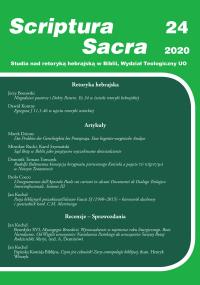
Artykuł prezentuje życie i twórczość Silvano Faustiego – włoskiego biblisty, filozofa i teologa; współzałożyciela wspólnoty braci zakonnych i świeckich rodzin w Villapizzone (Mediolan) oraz duchowego kierownika i spowiednika kard. C.M. Martiniego. Jego pasja biblijnych poszukiwań zaowocowała imponującym dorobkiem publikacji, które propagują starożytną praktykę lectio divina, katechetyczną lekturę Pisma Świętego – katechezę narracyjną oraz rozeznawanie powołania według duchowości ignacjańskiej. Z tego dorobku korzysta wspólnota braci zakonnych i świeckich w Villapizzone oraz wiele innych wspólnot, które praktykują osobistą i wspólnotową lekturę Biblii. Metoda lectio divina, pierwotnie praktykowana w środowisku zakonnym, dzisiaj stała się dostępna dla wszystkich wierzących w Chrystusa – Słowo Życia. Medytacyjna lektura Pisma Świętego jest żywym doświadczeniem wielu osób duchownych i świeckich, autentycznym darem Boga, bez którego chrześcijanie nie potrafiliby czytać, rozważać, modlić się i żyć Słowem. Ćwiczenie się w słuchaniu słowa Bożego ułatwia poznanie „sprawy Jezusa z Nazaretu” (Dz 10,38), wzmaga pasję badawczą („łowienie/tropienie” w Biblii), czyli właściwą interpretację i aktualizację orędzia zbawienia.
More...

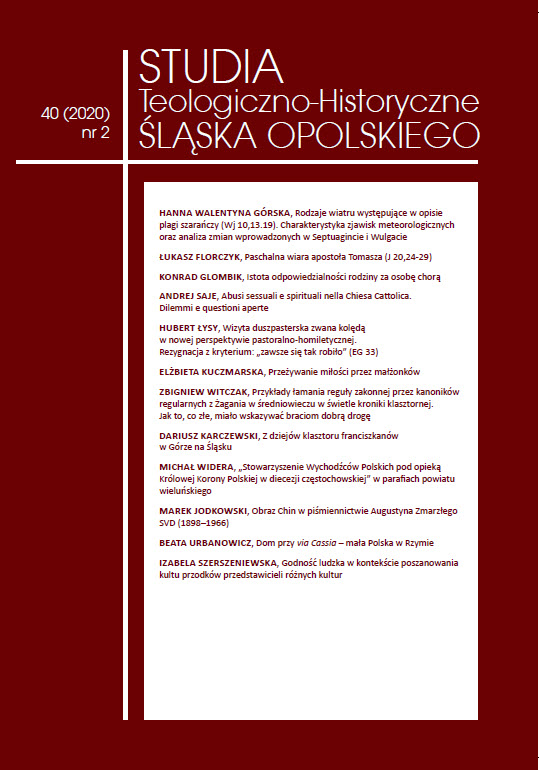
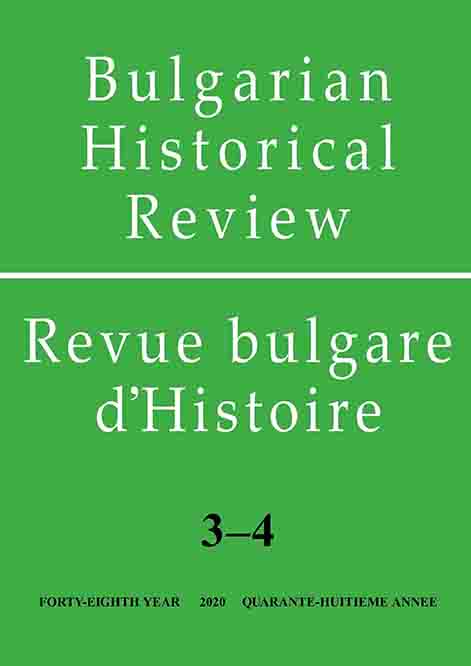
In 1913, the seat of the Bulgarian Exarchate was re-located to Sofia while the Exarchal Vicegerency remained in Istanbul, unrecognized by the Ecumenical Patriarchate and the Turkish authorities, but supported by the Bulgarian government and the Bulgarian Orthodox Church (BOC). The conditions for lifting the schism in 1945 and the unsettled status of both the Exarchal Vicegerency and the Bulgarian Church Community in Turkey deprived the Bulgarians of Bulgarian church representation and predetermined their remaining in the diocese of the Ecumenical Patriarchate. In 1950, the Bulgarians of Turkish citizenship elected a Church Board of Trustees and Managing Board of the Foundation of the Orthodox Church of the Bulgarian Exarchate, already registered in 1936, to manage the church affairs. Since 1953, the Church Board has been recognized as a legal entity with the right to manage the property of the Bulgarian church community. Since 1953 in Istanbul, the Patriarchal Vicegerency with very limited functions has remained in place of the Exarchal Vicegerency. Over the years, the role of the Church Board has been established. It has the right before all authorities in the country to seek and protect the property rights of the Bulgarian churches.
More...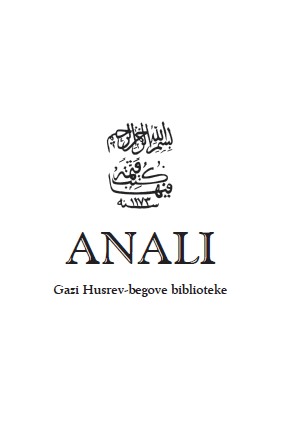
After the conquest of Jajce in 1528, by order of the Ottoman rule, the former Church of St. Mary was converted into a mosque which was named after the then sultan, namely Sultan Suleyman’s Mosque or the Emperor’s Mosque. Without referring to the pre-Ottoman period of the construction and activities of St. Mary’s Church for which our literature accumulated considerable material, this paper will focus on the period of the foundation of the mosque in 1528 until the beginning of the Second World War. Based on the archival material and published sources, this paper tries to explain why St. Mary’s Church had been converted into a mosque and how that had been done. More significant events from the history of the mosque are highligted, and also imams, hatibs, muezzins and other mosque officials are portrayed chronologically to the present day. Special attention is focused on the history of Sultan Sulayman’s Mosque in the 19th century when a fire broke out at the mosque, and it has never been restored to the present day. Referring to the sources from the archives of the Islamic Community in Bosnia and Herzegovina, the author has pointed to the causes of the fact that the mosque was not restored after the fire.
More...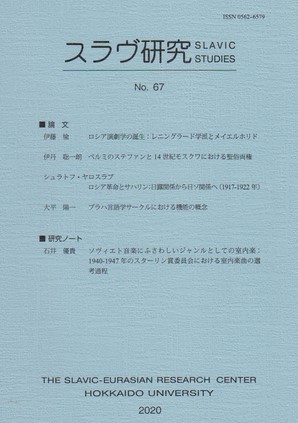
The fourteenth century was a significant era, when the Orthodox Church’s power grew in Northeastern Rus’ and its interactions with the state in the Grand Principality of Moscow increased. The mission initiated by Stephen of Perm (c. 1345-1396) to the Komi, Finno-Ugrian inhabitants of the Vychegda Perm region, the eastern part of the Russian North, occupied a distinctive place in the Church’s vibrant activities of this era. Stephen created the Old Permic script, translated Christian texts into the Komi language, and converted the Komi to Christianity—the single case in the long history of the Orthodox Church since the mission of Cyril and Methodius in the ninth century up to today, when the mission among non-Slavic peoples was accompanied by the creation of a new script. In addition, appointed as the first bishop of Perm in 1383, Stephen played an active role in alleviating the conflict between the Grand Principality of Moscow and the Republic of Novgorod. Previous scholarship, however, has not meaningfully captured Stephen’s important political role, primarily addressing the cultural aspects of his activities. This article sheds fresh light on the political implications of his mission to the Komi, detecting its connection with the expansion of the Grand Principality of Moscow and thereby clarifying the relationship between Stephen of Perm, the grand prince of Moscow, and the metropolitan of all Rus’. This helps us reconsider state-church interactions in fourteenth-century Moscow. The close linkage of Stephen’s mission with Moscow notwithstanding, there was a discrepancy between the grand prince of Moscow and the metropolitan of all Rus’. Dmitry Donskoy (r. 1359-1389), the grand prince of Moscow, was a constant supporter of Stephen’s mission to the Komi, together with his intimate clergy including the metropolitan candidate Mikhail Mityay, Bishop Gerasim of Kolomna, and Metropolitan Pimen. Presumably, Dmitry understood that Stephen’s initiative would be useful for the Grand Principality of Moscow’s northward expansion policy in general and its fur trade in particular. Yet no evidence shows that anyone but the pro-Dmitry clergy supported Stephen’s mission; the Metropolitan Alexius and Metropolitan Cyprian might have been unhappy with Stephan’s activities. Thus, it may be safe to argue that Stephan’s mission to the Komi was an enterprise independent of the Russian Orthodox Church and that the Church did not act in concert with the Grand Principality of Moscow. This does not mean that Stephan’s mission to the Vychegda Perm was totally subjugated to Moscow’s will, however. Stephen as bishop of Perm endeavored to preserve the “Komi Orthodox Church” catering to the Komi people. His use of the Komi language and appointment of Komi clerics as well as his involvement in the peace negotiation with Novgorod in 1386 account for the degree of leeway Stephen enjoyed from Moscow. In sum, this article contributes to the clarification of the relationship between Stephen of Perm, the grand prince of Moscow, and the metropolitan of all Rus’ in the following manner. Dmitry’s patronage of Stephen’s mission was an outcome of friendship and mutual interest. Given the grand prince of Moscow’s policy of northward expansion, Stephen’s mission may well have facilitated the later annexation of the Komi region. In addition, Stephen as bishop of Perm played a significant political role in arbitrating in the strife between Moscow and Novgorod over the Russian North. The fact that the Church in unison did not orchestrate Stephen’s mission reveals that such a state-church coordination as evident in later periods did not exist in fourteenth-century Moscow.
More...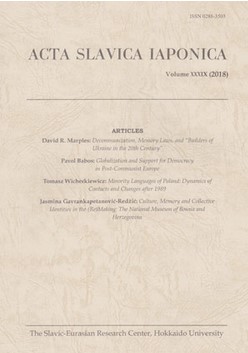
This paper examines Messianic thought in Russia through political and theological debates on the Old Catholic movement. The Old Catholic Church emerged as a reaction to the first Vatican Council (1870) with the program of reconnecting with the Lutheran, Anglican and Orthodox Churches on the theological foundation, laid out by the Church fathers and Church councils of the first ten centuries of Christianity. The Old Catholic question, which initially appeared as one of purely ecclesiological and perhaps theological interest, was broadly aired and discussed by literally every significant Russian public figure in the 1870s–1900s. Although Old Catholicism per se and its relations with the Russian Orthodox Christianity have not been successful to date, it induced the crystallization of a network of sympathizers in the Russian Empire. For them, Old Catholicism was a means to voice their discontent with the official Church and to shape their alternative visions about Russian Orthodoxy in world history. The Old Catholic movement stirred up religious and geopolitical hopes and initiated important ideological and theological discussions, which revolved around such questions as, what is Russia’s role in the world, and how can religious principles be implemented in everyday life.
More...